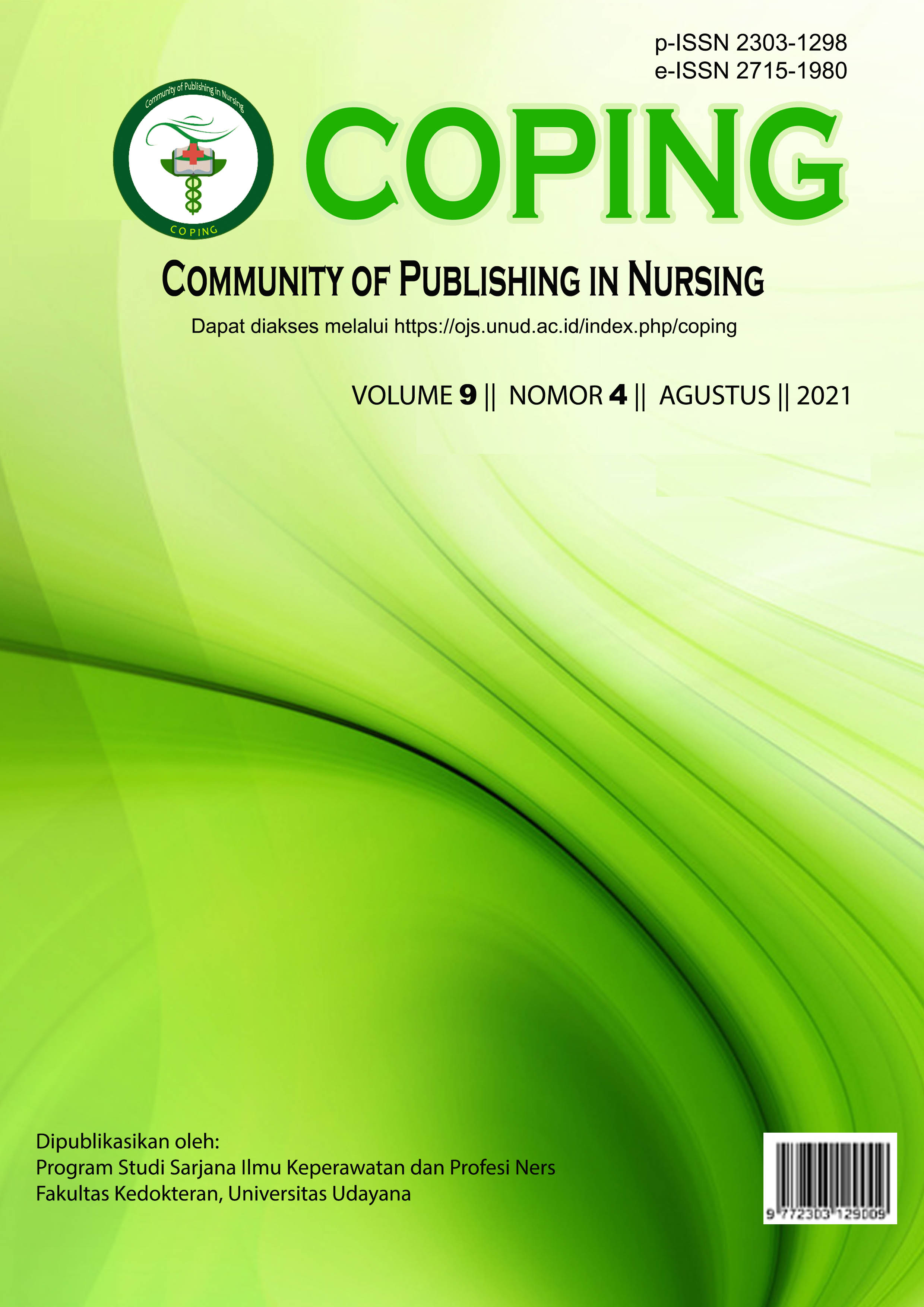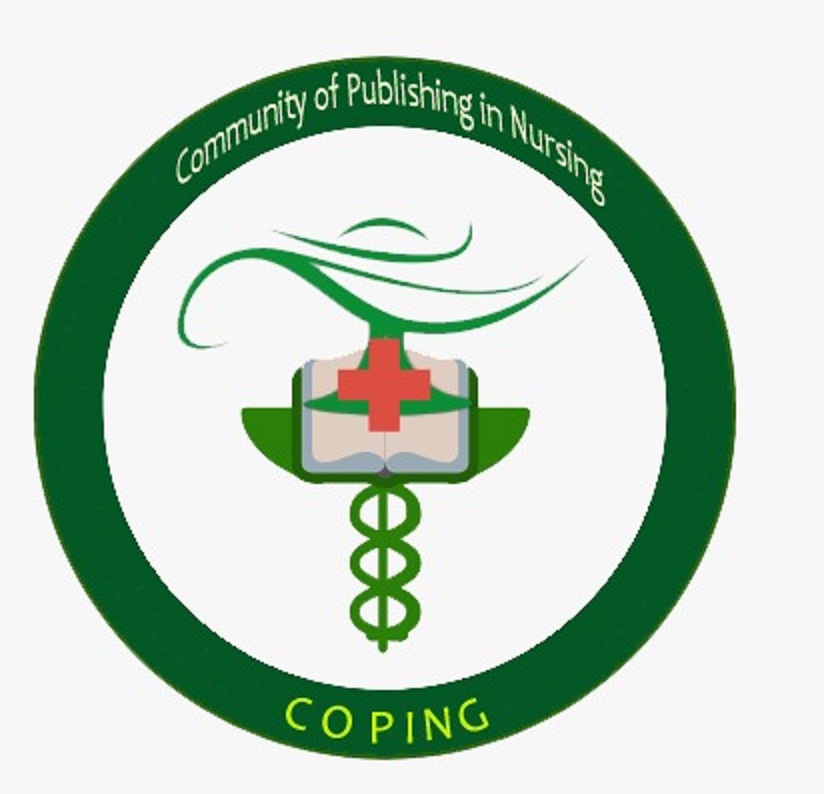HUBUNGAN TINGKAT PENGETAHUAN DAN SIKAP REMAJA TENTANG JERAWAT DI SMP ADVENT PARONGPONG
Abstract
ABSTRACT
Introduction: Acne vulgaris is a chronic inflammation of the pilosebaceous unit with clinically polymorphic lesions consisting of non-inflammatory (open and closed, comedones) and inflammatory lesions (papules, pustules, and nodules) with varying degrees of inflammation. Several factors can cause negative feelings or mental health problems due to acne, such as reduced self-esteem and self-confidence, shyness, avoiding direct contact with people, feelings of helplessness, anxiety, and fear. The incidence or cases of acne The increasing number can be caused by many factors, one of which and the most important is the level of knowledge and how to respond to it. Objective: to determine the level of knowledge and attitudes of adolescents about acne. Methods: this study uses a quantitative design with aapproach cross sectional. Sampling used total sampling with a total of 58 respondents. This research was conducted at the Parongpong Adventist Middle School. Conclusion: the results of the research test showed that the level of knowledge of Parongpong Junior High School students about Acne was moderately knowledgeable with a percentage value (77.6%), while the Parongpong Junior High School students' attitudes about Acne were having a negative attitude with a percentage value (53.4 %). The results of the statistical test analysis using Spearman Rho with the level of closeness of relationship = 0.486 (<0.5), and has a p-value of0.000 (p<0.05). These results indicate that there is a significant relationship between knowledge and attitudes of Parongpong Junior High School students about acne. Suggestion: It is necessary to increase knowledge about acne, especially in adolescents. The researcher hopes that the school can work together with health workers to carry out socialization and counseling about acne. It is hoped that further researchers will conduct research on acne with different variables.
Downloads
References
Anonim. (2018). Tentang Kota Palembang. http://www.palembang.go.id/41/tentang-kota-palembang
Cahyandari, M. A., & Estria, S. R. (2020). Konsep Diri Pada Mahasiswa yang Memiliki Jerawat Tingkat Sedang dan Berat di Fakul-tas Ilmu Kesehatan Universitas Muhammadiyah Purwokerto. Jurnal Keperawatan Muhammadiy, September.
Diejek Jerawatan, Gantung Diri. (2018). https://radarbojonegoro.jawapos.com/read/2018/03/26/59802/diejek-jerawatan-gantung-diri
Fitri Hafianty, Dian Erisyawanty Batubara, F. D. P. L. (2021). Faktor Risiko Terjadinya Akne Vulgaris Pada Siswa-Siswi Kelas XII SMA Harapan 1 Medan. Journal of Chemical Information and Modeling, 53(9), 1689–1699.
Gallo, R. L., Granstein, R. D., Kang, S., Mannis, M., Steinhoff, M., Tan, J., & Thiboutot, D. (2018). Standard classification and pathophysiology of rosacea: The 2017 update by the National Rosacea Society Expert Committee. Journal of the American Academy of Dermatology, 78(1), 148–155. https://doi.org/10.1016/j.jaad.2017.08.037
Goh C, Cheng C, Agak G, Zaenglein AL, G. E., & Thiboutot Dm, K. J. (2019). Fitzpatrick’s dermatology in general medicine. (K. S, M. Amagai M, Bruckner AL, Enk AH, Margolis DJ, & O. J. AJ (Eds.); First Volu). The McGraw Hill Companies.
Lema, E. R., Yusuf, A., & Wahyuni, S. D. (2019). Gambaran Konsep Diri Remaja Putri Dengan Acne Vulgaris Di Fakultas Keperawatan Universitas Airlangga Surabaya. Psychiatry Nursing Journal (Jurnal Keperawatan Jiwa), 1(1), 14. https://doi.org/10.20473/pnj.v1i1.12504
Lestari, R. T., Gifanda, L. Z., Kurniasari, E. L., Harwiningrum, R. P., Kelana, A. P. I., Fauziyah, K., Widyasari, S. L., Tiffany, T., Krisimonika, D. I., Salean, D. D. C., & Priyandani, Y. (2020). Perilaku Mahasiswa Terkait Cara Mengatasi Jerawat. Jurnal Farmasi Komunitas, 8(1), 15. https://doi.org/10.20473/jfk.v8i1.21922
Marliana, M., Sartini, S., & Karim, A. (2018). EFEKTIVITAS BEBERAPA PRODUK PEMBERSIH WAJAH ANTIACNE TERHADAP BAKTERI PENYEBAB JERAWAT Propionibacterium acnes. BIOLINK (Jurnal Biologi Lingkungan, Industri, Kesehatan), 5(1), 31. https://doi.org/10.31289/biolink.v5i1.1668
Matheus, K. G., Wungouw, H. P. L., & Rante, S. D. T. (2018). Hubungan Kejadian Acne Vulgaris Dengan Tingkat Kepercayaan Diri Pada Siswi Sman 3 Kupang. Cendana Medical Journal, 15(9), 369–375.
Mutiara, S. (2019). Pengaruh Penggunaan Kosmetik Skin Care Terhadap Timbulnya Acne Vulgaris Pada Siswa Kecantikan Smkn 6 Dan Smn 7 Padang. Jurnal Pendidikan Dan Keluarga, 10(2), 228. https://doi.org/10.24036/jpk/vol10-iss2/544
Notoatmodjo, S. (2010). Metodologi Penelitian Kesehatan. Rineka Cipta.
Sampelan, M., Pangemanan, D., & Kundre, R. (2017). Hubungan Timbulnya Acne Vulgaris Dengan Tingkat Kecemasan Pada Remaja Di Smp N 1 Likupang Timur. Jurnal Keperawatan UNSRAT, 5(1), 111202.
Siahaan, T. D., Lestari, T. B., & Supardi, S. (2020). Hubungan Antara Kejadian Acne Vulgaris Dengan Harga Diri Remaja. Jurnal Mutiara Ners, 3(1), 15–21.
Sitohang IB, W. S. (2015). Ilmu Penyakit Kulit dan Kelamin (7th ed).
Soetjiningsih. (2007). Tumbuh Kembang Remaja dan Permasalahannya (II). CV.Sagung Seto.
Solgajová, A., Sollár, T., Vörösová, G., & Zrubcová, D. (2016). The incidence of anxiety, depression, and quality of life in patients with dermatological diseases. Central European Journal of Nursing and Midwifery, 7(3), 476–483. https://doi.org/10.15452/CEJNM.2016.07.0018
Tarigan, M., Nababan, K. A., & Hutasoit, E. S. P. (2017). Tingkat Pengetahuan, Sikap Dan Tindakan Siswa-Siswi SMA Negeri 1 Kabanjahe Terhadap Acne Vulgaris Tahun Ajaran 2016/2017. Jurnal Kedokteran KMethodist, 10(2), 100–103. http://ojs.lppmmethodistmedan.net







